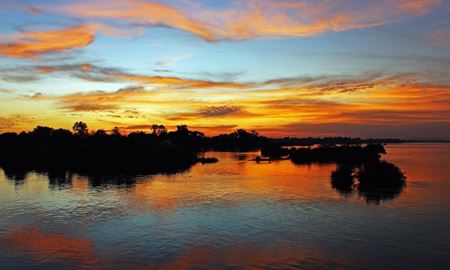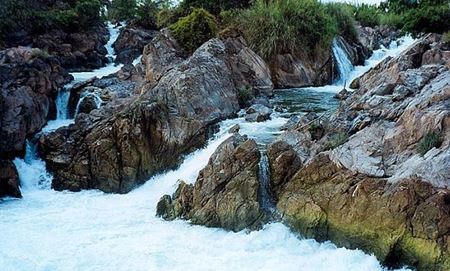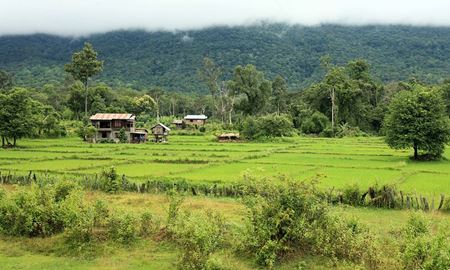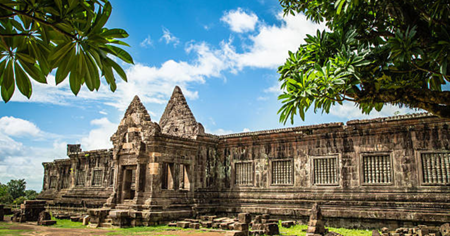Wat Phou Temple Complex – Explore a UNESCO World Heritage Site
Wat Phou Temple Complex is not just an ancient ruin — it’s a living testament to over a thousand years of cultural, religious, and architectural history in Southern Laos. Recognized as a UNESCO World Heritage Site, this awe-inspiring destination blends spiritual symbolism with stunning natural surroundings, making it a highlight of many Laos tours and Champasak tours.
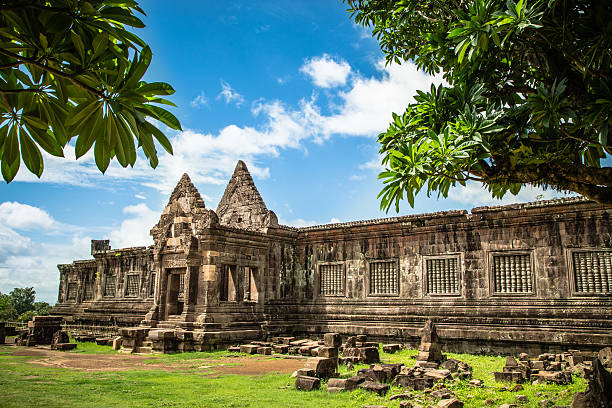
A Masterpiece of Harmony Between Nature and Humanity
Dating back more than 1,000 years, the Wat Phou Temple Complex was meticulously designed to express the Hindu vision of the relationship between nature and humanity. The temple’s layout follows a sacred axis that stretches from the top of Phou Kao Mountain down to the banks of the Mekong River.
This geometric alignment connects a series of temples, shrines, reservoirs, and waterworks across an area spanning over 10 kilometers. Every element of its design was intentional, reflecting ancient beliefs about cosmic order and the balance between earth, water, and sky.
A UNESCO-Recognized Cultural Landscape
In 2001, the Wat Phou Temple Complex and its surrounding cultural landscape were inscribed as a UNESCO World Heritage Site. The designation includes:
-
The temple complex itself, with its sandstone structures and intricate carvings.
-
Two ancient planned cities situated along the Mekong River.
-
Phou Kao Mountain, whose distinctive linga-shaped peak was considered sacred in Hindu tradition.
The site represents a continuous cultural development from the 5th to the 15th centuries, primarily associated with the Khmer Empire — the same civilization that built the world-famous Angkor Wat in Cambodia.

Spiritual and Historical Significance
Originally dedicated to the Hindu god Shiva, Wat Phou later became an important center for Theravada Buddhism, which remains the dominant religion in Laos today. Visitors can see evidence of both religious traditions in the site’s carvings, sculptures, and architectural details.
The temple also served as a vital political and economic hub in the region, controlling important trade routes along the Mekong River and connecting the civilizations of present-day Laos, Cambodia, and Thailand.
→ You may also like to explore: Wat Xieng Thong
What to See When You Visit
-
Lower Terrace: Featuring two large baray (reservoirs) symbolizing the Hindu cosmic oceans.
-
Middle Terrace: Home to the main temples and palaces, with detailed lintels and bas-reliefs.
-
Upper Terrace: The sanctuary built against the cliffs of Phou Kao, offering panoramic views of the Mekong plain.
-
Ancient Causeway: The ceremonial walkway linking different levels of the temple complex.
Tips for Travelers
-
Best Time to Visit: November to February for cooler, drier weather.
-
Getting There: Wat Phou is located near Champasak Town, about 45 minutes from Pakse by car.
-
What to Bring: Comfortable walking shoes, sun protection, and water.
Why Wat Phou Should Be on Your Travel List
The Wat Phou Temple Complex is more than a historical site — it’s a journey into the spiritual heart of the ancient Khmer Empire. Its unique combination of natural beauty, religious symbolism, and architectural brilliance makes it an unmissable destination for history lovers, culture enthusiasts, and curious travelers alike.
Whether you’re drawn by the sacred atmosphere, the sweeping Mekong views, or the centuries-old artistry, Wat Phou offers a rare glimpse into a world where nature and human creativity exist in perfect harmony.
Wat Phou offers a rare glimpse into a world where nature and human creativity exist in perfect harmony. Plan your Laos tour and make this UNESCO treasure in Champasak the highlight of your journey.



